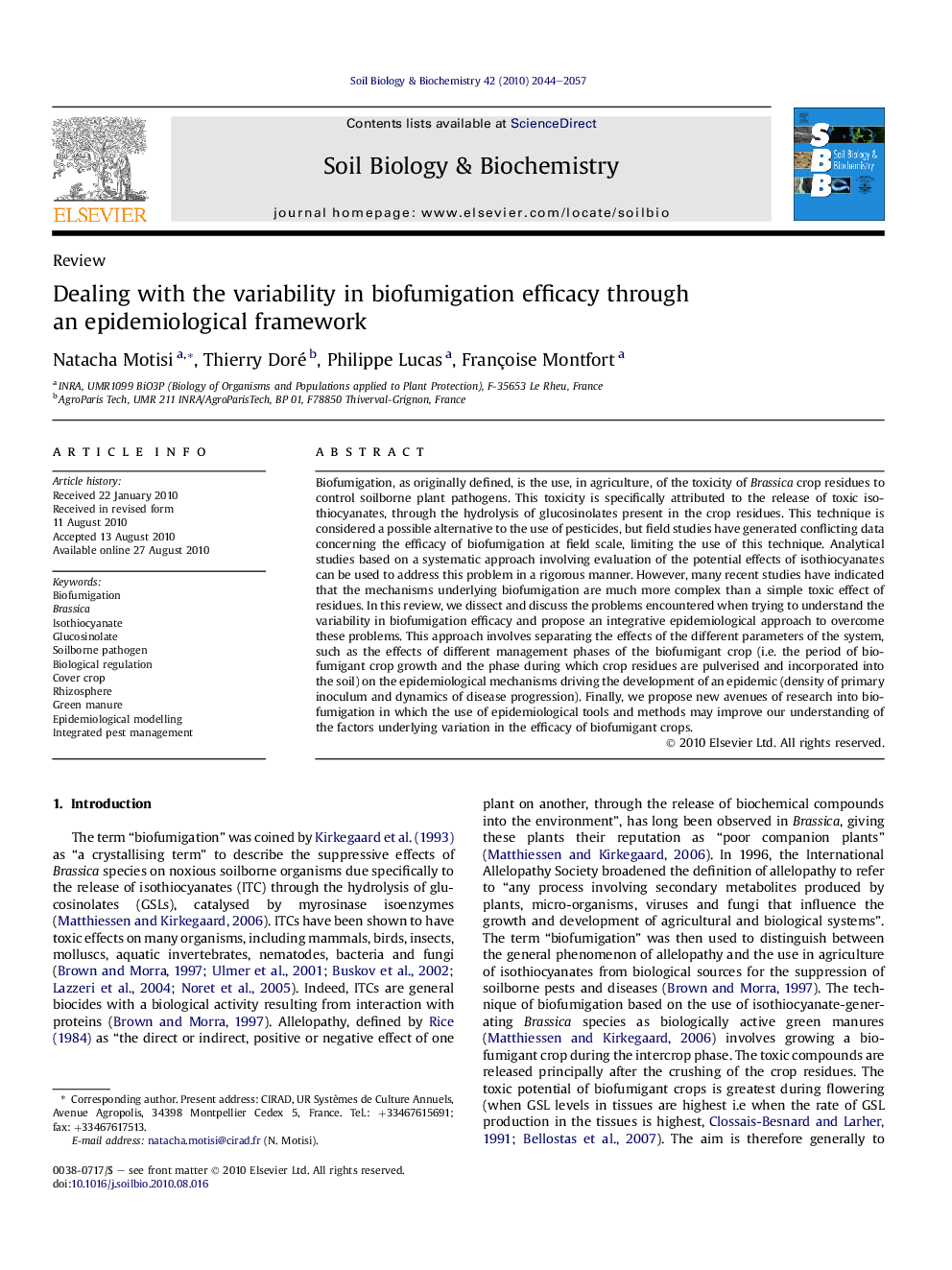| کد مقاله | کد نشریه | سال انتشار | مقاله انگلیسی | نسخه تمام متن |
|---|---|---|---|---|
| 2025357 | 1069993 | 2010 | 14 صفحه PDF | دانلود رایگان |

Biofumigation, as originally defined, is the use, in agriculture, of the toxicity of Brassica crop residues to control soilborne plant pathogens. This toxicity is specifically attributed to the release of toxic isothiocyanates, through the hydrolysis of glucosinolates present in the crop residues. This technique is considered a possible alternative to the use of pesticides, but field studies have generated conflicting data concerning the efficacy of biofumigation at field scale, limiting the use of this technique. Analytical studies based on a systematic approach involving evaluation of the potential effects of isothiocyanates can be used to address this problem in a rigorous manner. However, many recent studies have indicated that the mechanisms underlying biofumigation are much more complex than a simple toxic effect of residues. In this review, we dissect and discuss the problems encountered when trying to understand the variability in biofumigation efficacy and propose an integrative epidemiological approach to overcome these problems. This approach involves separating the effects of the different parameters of the system, such as the effects of different management phases of the biofumigant crop (i.e. the period of biofumigant crop growth and the phase during which crop residues are pulverised and incorporated into the soil) on the epidemiological mechanisms driving the development of an epidemic (density of primary inoculum and dynamics of disease progression). Finally, we propose new avenues of research into biofumigation in which the use of epidemiological tools and methods may improve our understanding of the factors underlying variation in the efficacy of biofumigant crops.
Research highlights
► Variability in biofumigation efficacy is an obstacle to its implementation.
► Efficacy depends on the ecological mechanisms induced by the biofumigant crop.
► Variability in efficacy can be understood via the study of epidemiological dynamics.
► We propose a framework linking epidemiology and ecological mechanisms induced by biofumigation.
Journal: Soil Biology and Biochemistry - Volume 42, Issue 12, December 2010, Pages 2044–2057